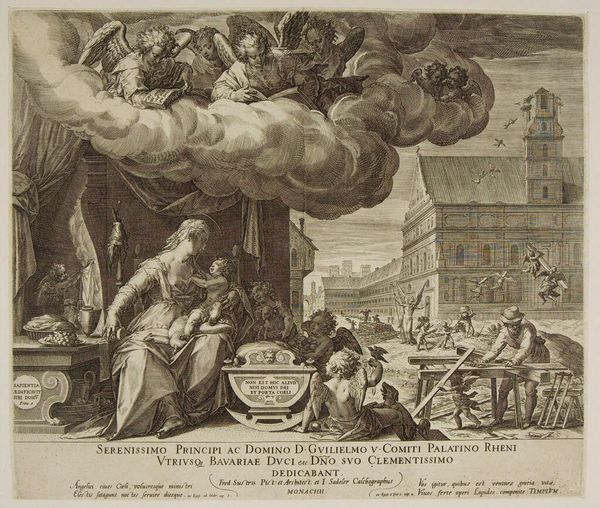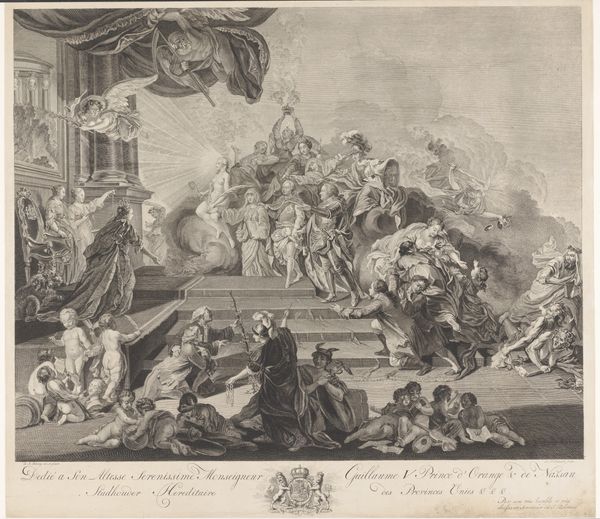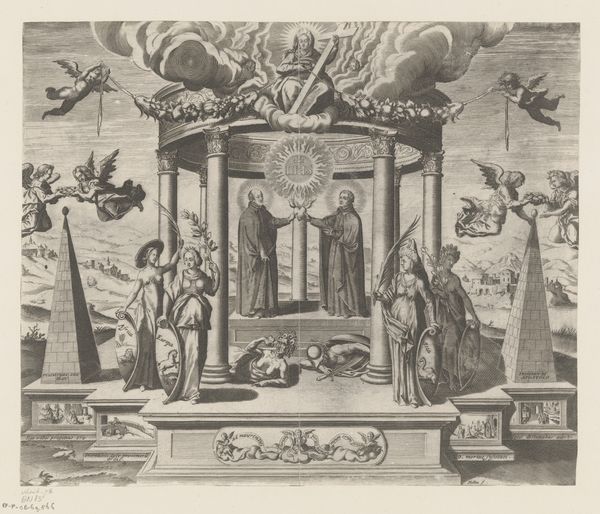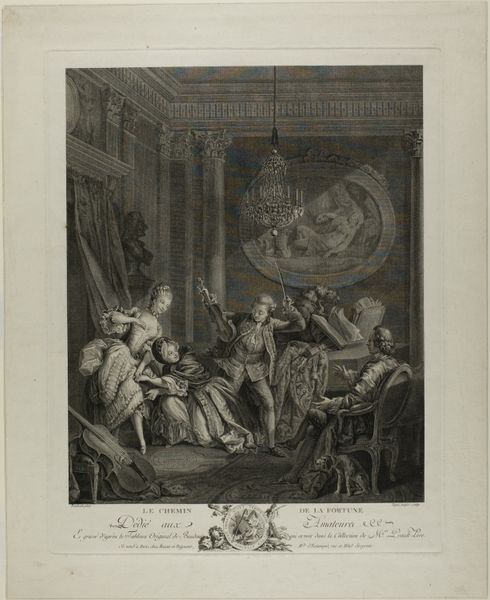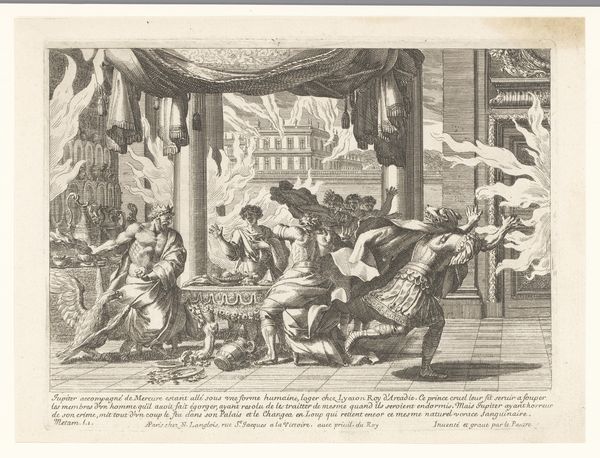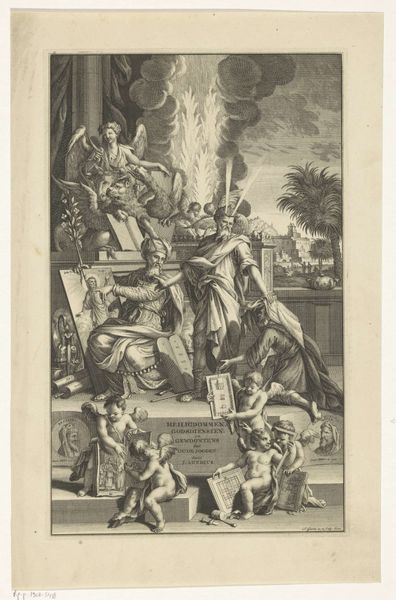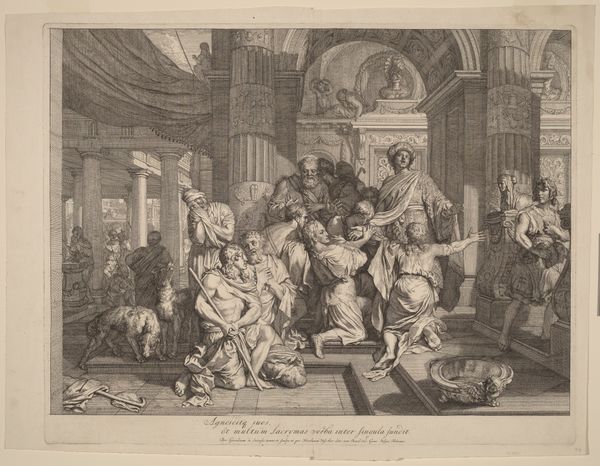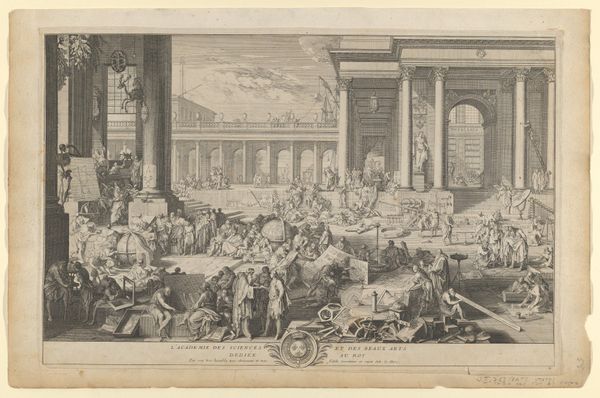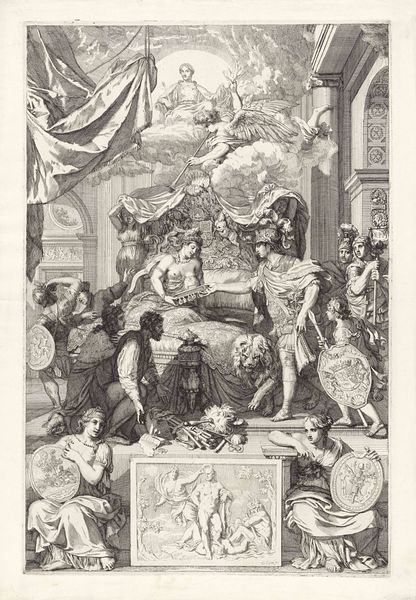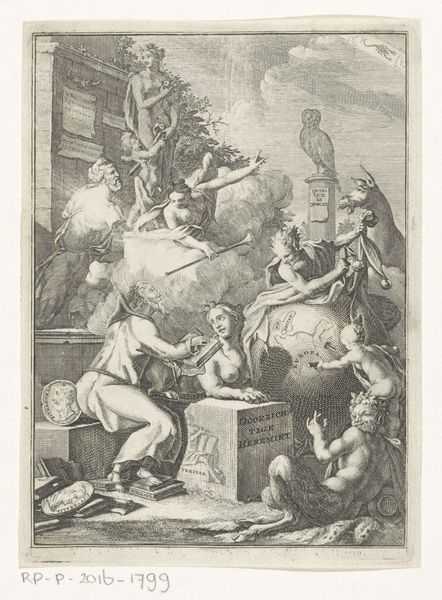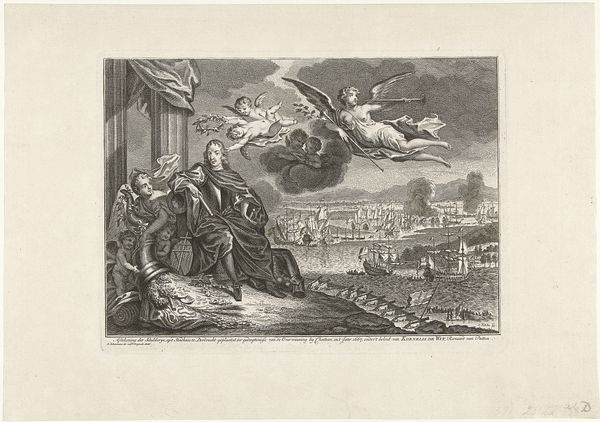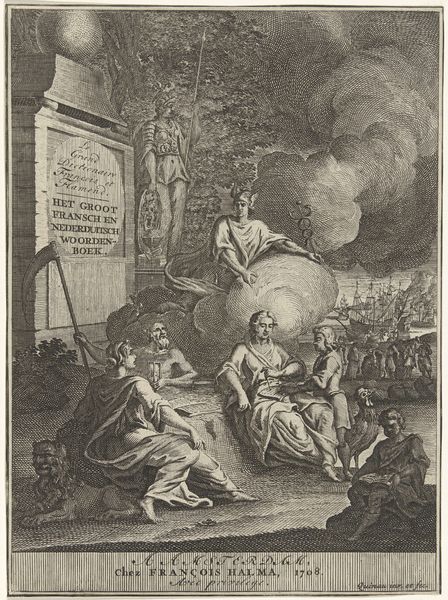
The Holy Family with the Church of Saint Michael in Munich under Construction 1584 - 1594
0:00
0:00
drawing, print, engraving
#
drawing
# print
#
11_renaissance
#
cityscape
#
history-painting
#
engraving
Copyright: Public Domain
Editor: This engraving, "The Holy Family with the Church of Saint Michael in Munich under Construction" by Johann Sadeler I, likely created between 1584 and 1594, feels…unusually busy for a holy scene. We have the Madonna and Child, angels galore, construction workers, and the cityscape of Munich. It's quite a juxtaposition. How do you interpret this work? Curator: The juxtaposition you noted is key. Consider the social and political climate in which it was created. This isn't simply a religious scene; it's a statement about power, patronage, and the role of the church in society. The construction of St. Michael's represents the Counter-Reformation's assertion of Catholic authority. Notice how the divine realm, with the Holy Family and heavenly musicians, literally floats above and oversees the earthly labor? Editor: Yes, it’s almost like divine approval stamped onto this construction project. Is the inclusion of common laborers also a way to democratize a religious idea? Curator: Precisely. It can be seen as a deliberate attempt to connect with a wider audience, incorporating everyday life into a grand narrative of faith and progress. The engraver, Johann Sadeler, includes inscriptions, dedicating this print to Duke Wilhelm V, a patron of the arts, linking him to the project and associating his power with this sacred undertaking. Consider the visual hierarchy here - who has the agency? Is it the Holy Family, the Duke, or the working class, and what do those hierarchies suggest? Editor: It feels like the Holy Family lends legitimacy, almost a sacred justification, to Duke Wilhelm's building project and, by extension, his rule. But there’s still a spotlight on the everyday, the ordinary. Curator: Exactly! It shows how Renaissance art cleverly weaved together the spiritual, the political, and the mundane to promote particular agendas and to shape the identities of social actors involved in its construction. Editor: It’s so much more than just a holy scene! This really opens my eyes to the layers of meaning in what initially seemed like a straightforward religious image. Curator: It reveals how closely interwoven faith and political aspirations truly were.
Comments
No comments
Be the first to comment and join the conversation on the ultimate creative platform.


